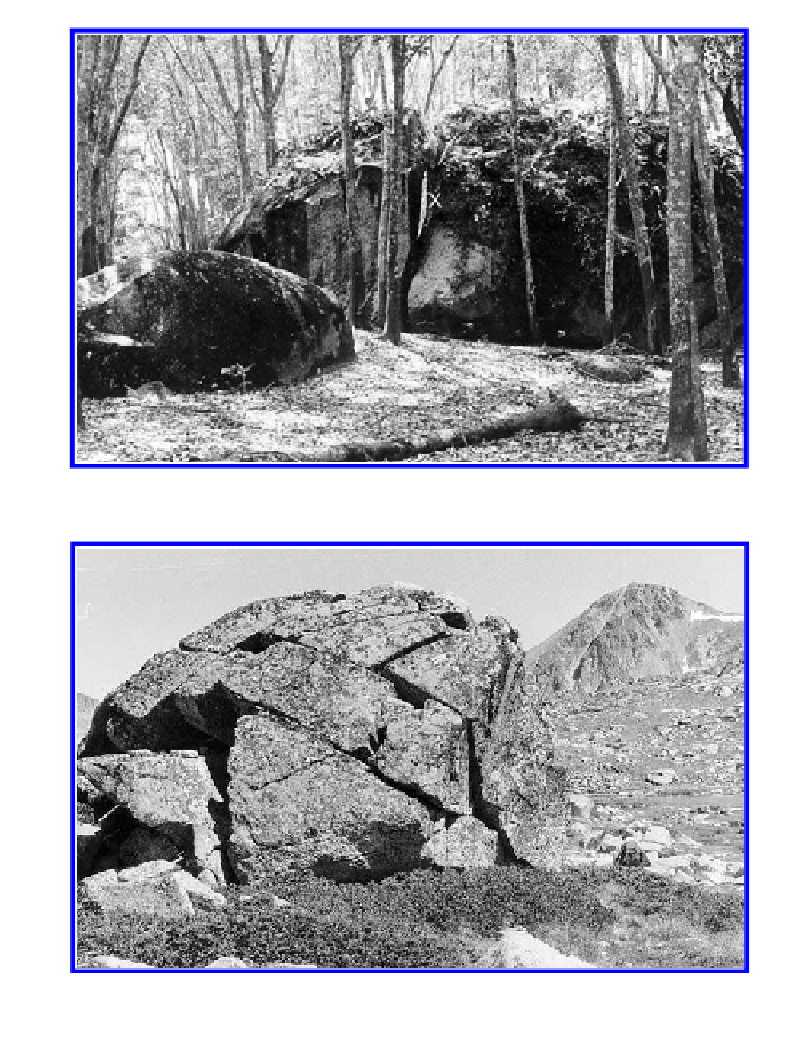Geology Reference
In-Depth Information
(c)
Figure 11.2.
(c) In the Tampin area (x) West Malaysia.
(a)
Figure 11.3.
Split rocks exploiting latent partings conformable with the regional fracture patterns (a) in the
Pyrenees.
The most plausible general explanation of split rocks is based on gravity. Secondary fractures
(i.e. shears not involved in delimiting the joint blocks) within the original mass
(
Fig. 11.4)
or rift
and grain (Chapter 2) are exploited by moisture attack either in the subsurface, concurrently with
the differential weathering that produces corestones (see Chapter 5) or after exposure of the core-
stones as boulders. On exposure, the corestones are no longer confined and supported, and though
the boulders and blocks are defined and delineated by orthogonal joints, it is a matter of observa-
tion that they include other secondary or latent joints. Even if the exposure of the corestone is
incomplete, the spheroidal mass is subjected to tensional stress rather than compressional and
gravitational (lithostatic) loading.


